Author: Steve Thanos
Commonly viewed as the primary beer seasoning, hops are a flower that contribute essential bitterness, aroma, and flavor to beer. As ubiquitous as hops are these days, brewers of yore relied on various other ingredients to spice their beer including spruce tips, which are the new growths of certain evergreen trees.
Typically harvested in the spring, spruce tips are said to contribute a number of characteristics to beer ranging from citrus and floral to cinnamon and pine, making it a nice compliment to many styles. While they impart similar aroma and flavor characteristics as hops, spruce tips contribute little bitterness to beer due to possessing no alpha acids, and a review of historical recipes suggests various approaches to using this unique ingredient.
I rather enjoy what spruce tips contribute to beer and brew a handful of batches every year, typically adding them toward the end of the boil or during fermentation in hopes of retaining as much character as possible. With a past xBmt showing tasters could tell apart an IPA where spruce tips were added late in the boil from one where the spruce tips were added during fermentation, I began to wonder what impact extended contact with boiling wort might have and designed an xBmt to test it out.
| PURPOSE |
To evaluate the differences between an American Pale Ale where spruce tips were in contact with the boiling wort for either 30 minutes or 5 minutes.
| METHODS |
I went with a simple American Pale Ale recipe for this xBmt, as I feel spruce tips work well with this style.
Perseverating
Recipe Details
| Batch Size | Boil Time | IBU | SRM | Est. OG | Est. FG | ABV |
|---|---|---|---|---|---|---|
| 5.5 gal | 60 min | 44.4 | 7 SRM | 1.05 | 1.009 | 5.38 % |
| Actuals | 1.05 | 1.009 | 5.38 % | |||
Fermentables
| Name | Amount | % |
|---|---|---|
| Vienna | 9 lbs | 90 |
| Biscuit | 8 oz | 5 |
| Red Wheat | 8 oz | 5 |
Hops
| Name | Amount | Time | Use | Form | Alpha % |
|---|---|---|---|---|---|
| Simcoe | 14 g | 60 min | Boil | Pellet | 13 |
| Citra | 14 g | 10 min | Boil | Pellet | 14.5 |
| Cascade | 28 g | 5 min | Boil | Pellet | 4.7 |
| Citra | 28 g | 5 min | Boil | Pellet | 14.5 |
Miscs
| Name | Amount | Time | Use | Type |
|---|---|---|---|---|
| Spruce Tips | 84 g | 30 min | Boil | Spice |
Yeast
| Name | Lab | Attenuation | Temperature |
|---|---|---|---|
| Flagship (A07) | Imperial Yeast | 77% | 0°F - 0°F |
Notes
| Water Profile: Ca 40 | Mg 13 | Na 9 | SO4 10 | Cl 14 |
Download
| Download this recipe's BeerXML file |
After collecting 2 sets of water and lighting the flame to get them heating up, I weighed out and milled the grains.
Once the water for each batch was adequately heated, I incorporated the grains then checked to make sure both were at the same target mash temperature.
While the mashes were resting, I prepared the kettle hop additions.
Next, I weighed out identical amounts of spruce tips that I’d previously harvested from trees in my neighborhood.
Once each 60 minute mash was complete, I removed the grains then boiled the worts for 60 minutes, adding the spruce tips to one batch with 30 minute left in the boil while they were added to the other batch with 5 minutes left in the boil. With each boil complete, I quickly chilled the worts with my Hydra IC then took refractometer readings showing both achieved the same target OG
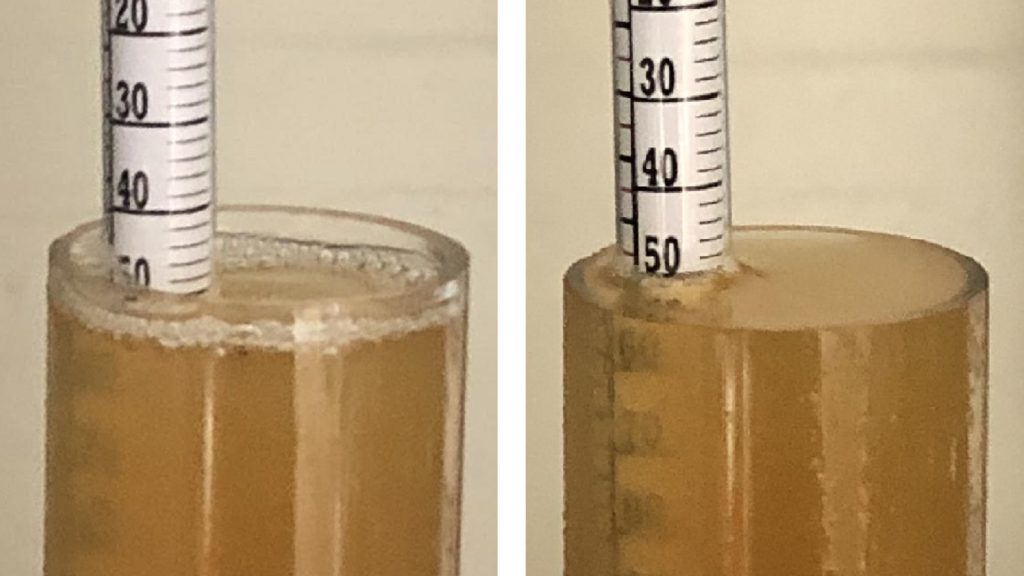
The filled carboys were placed in my chamber and left to finish chilling to my desired fermentation temperature of 66°F/19°C for a few hours before I pitched a pouch of Imperial Yeast A07 Flagship into each.
With signs of fermentation activity absent after 10 days, I took hydrometer measurements showing a small difference in FG.
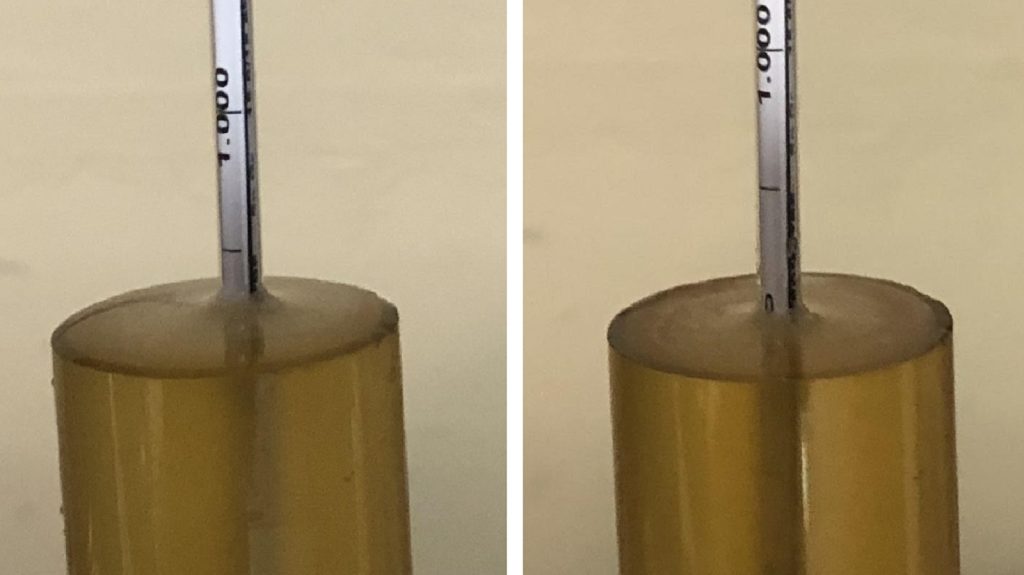
I then transferred the beers into CO2 purged kegs and placed in my keezer where they were left to condition for a week before they were ready to serve.
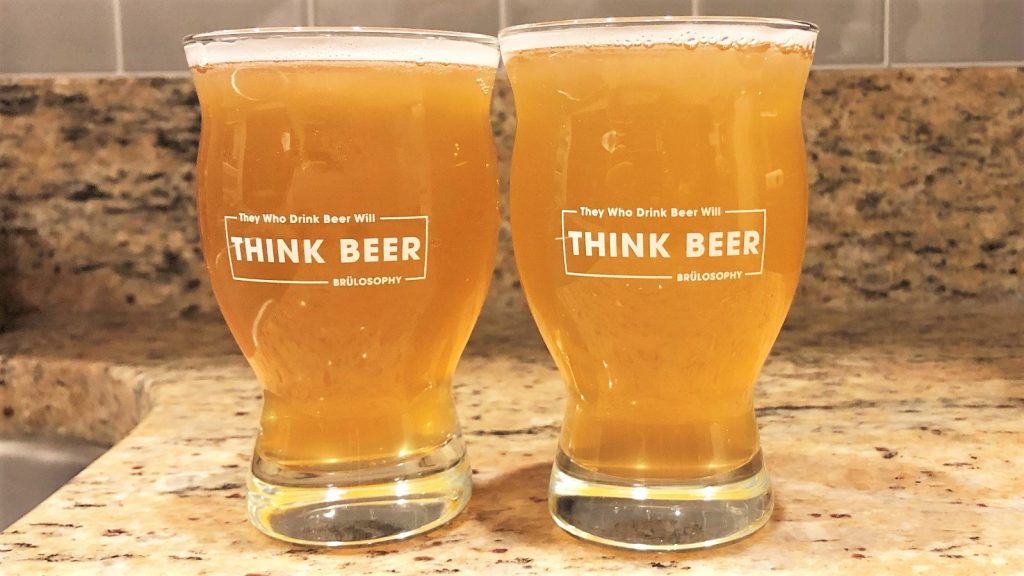
| RESULTS |
A total of 20 people of varying levels of experience participated in this xBmt. Each participant was served 2 samples of the beer made with a 30 minute spruce tip addition and 1 sample of the beer made with a 5 minute spruce tip addition in different colored opaque cups then asked to identify the unique sample. While 11 tasters (p<0.05) would have had to accurately identify the unique sample in order to reach statistical significance, 9 did (p=0.19), indicating participants in this xBmt were unable to reliably distinguish an American Pale Ale where spruce tips were added with 30 minutes left in the boil from one where spruce tips were added with 5 minutes left in the boil.
My Impressions: Out of the 5 semi-blind triangle tests I attempted, I correctly guessed the odd-beer-out just twice, as I perceived these beers to be identical in every way. Both possessed the sweet pine character I’ve come to expect from spruce beers, which I felt worked very well in this beer. Both beers were great!
| DISCUSSION |
While records indicate spruce tips have been used to make beer centuries ago, they all but fell out of favor as hops became the seasoning of choice, though their use is seeing a bit of a resurgence among modern brewers seeking unique ingredients. When used in the kettle, spruce tips are often added toward the end of the boil with the goal of preserving as much character as possible, though interestingly, tasters in this xBmt were unable to reliably distinguish an American Pale Ale where spruce tips were added with 30 minutes left in the boil from one where they were added with 5 minutes left in the boil.
Spruce tips and hops are used in a similar manner, and while the former doesn’t possess the same bittering capacity due to an absence of alpha acids, the idea that volatilization of certain aromatic compounds is a function of time in the boil is understandable. However, these results don’t support this idea, suggesting whatever spruce tips contribute to beer when added late in the boil seems to stick around when boiled for a longer duration.
Having brewed a number of spruce beers over the years, I’ve developed my own set of presumptions based purely on my personal experience, one of which is that later boil additions would result in a more pronounced spruce character. Suffice to say, the results of this xBmt were rather surprising to me. I plan to continue adding spruce tips toward the end of the boil, but not necessarily with the belief it’ll have a perceptible impact, and given prior xBmt findings, I’ll likely combine pairing kettle and fermentation additions.
If you have any thoughts about this xBmt, please do not hesitate to share in the comments section below!
Support Brülosophy In Style!
All designs are available in various colors and sizes on Amazon!
Follow Brülosophy on:
FACEBOOK | TWITTER | INSTAGRAM
If you enjoy this stuff and feel compelled to support Brulosophy.com, please check out the Support page for details on how you can very easily do so. Thanks!


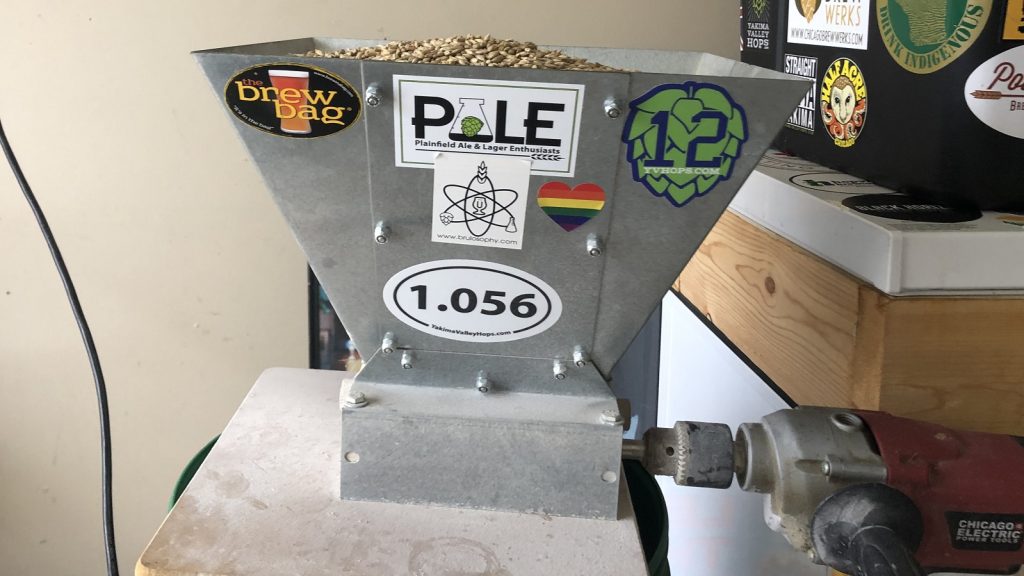
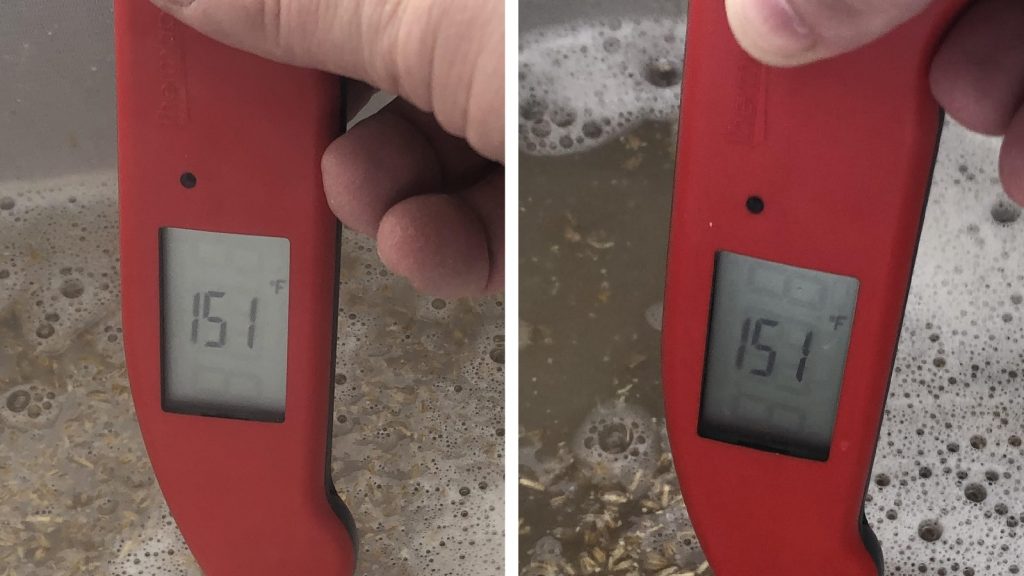
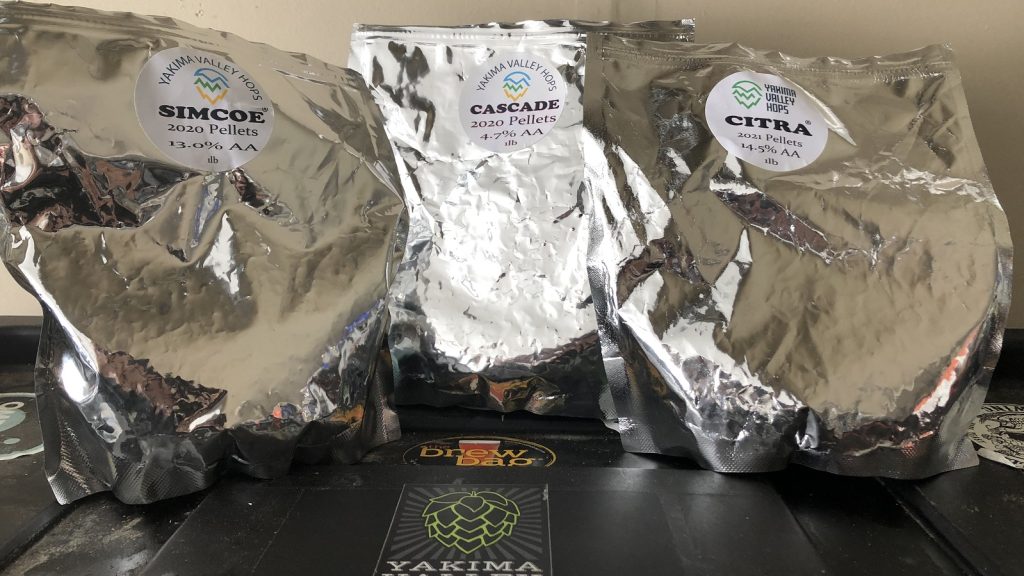
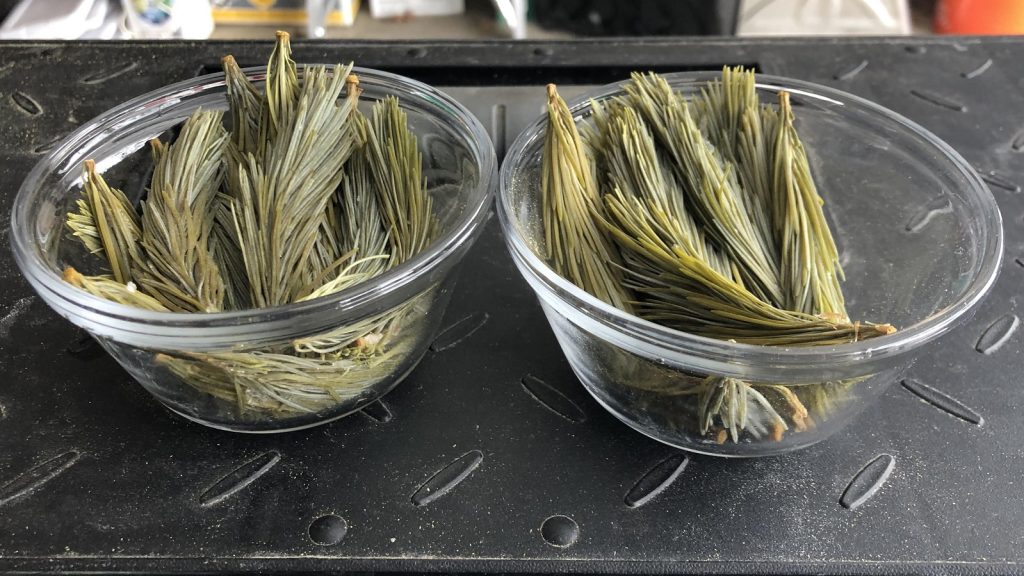
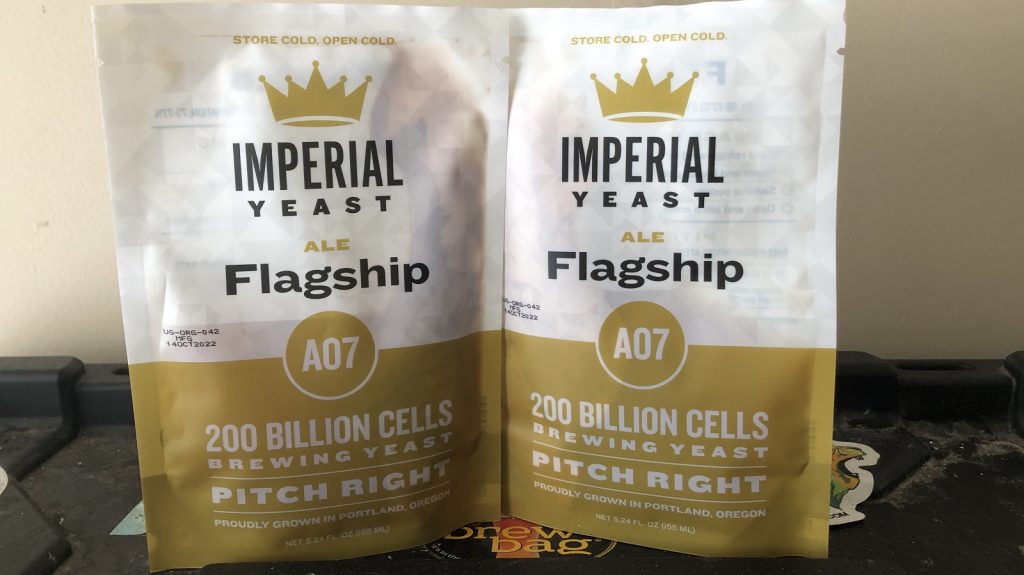











3 thoughts on “exBEERiment | Brewing With Spruce: 30 Minute vs. 5 Minute Kettle Addition In An American Pale Ale”
I find it ironic that one of the flavour descriptors for spruce is pine. Perhaps we need to change the flavour wheel. On a more serious note, have you ever tried brewing with actual pine? I know juniper is common in Norwegian styles. Secondly do you know what type of spruce was used? The tips in the photo look very robust compared to the native spruce here in western Canada. In fact yours look to me (as a biologist) to actually be fir of some kind. …perhaps the genesis of further experimentation.
I use spruce tips each year but don’t boil them but make an infusion with vodka and add it to the beer keg (or mead) to maximize flavor and aroma.
I used 1lb in a 6 gallon batch at 60 minutes and the spruce flavor is very noticeable. Most everyone that tried it liked it. I liked it but somewhat sprucey for me. But not bad for my first try at it. Sounds like it doesn’t matter when you put them in as long as it is during the boil. Thank you